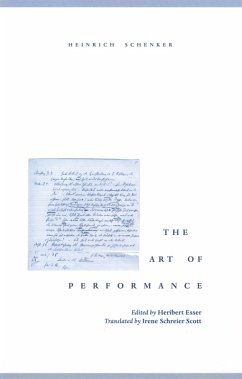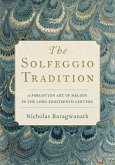Heinrich Schenker's The Art of Performance shows this great music theorist in a new light. While his theoretical writings helped transform music theory in the twentieth century, this book draws on his experience as a musician and teacher to propose a sharp reevaluation of how musical compositions are realized in performance. Filled with concrete examples and numerous suggestions, the book will interest both music theorists and practicing performers. Schenker's approach is based on his argument that much of contemporary performance practice is rooted in the nineteenth-century cult of the virtuoso, which has resulted in an overemphasis on technical display. To counter this, he proposes specific ways to reconnect the composer's intentions and the musician's performance. Schenker begins by showing how performers can benefit from understanding the laws of composition. He demonstrates how a literal interpretation of the composer's indications can be self-defeating, and he provides a lively discussion of piano technique, including suggestions for pedal, sound color, orchestral effects, and balance. He devotes separate chapters to non-legato, legato, fingering, dynamics, tempo, and rests. In addition to the examples for pianists, Schenker covers a number of topics, such as bowing technique, that will prove invaluable for other instrumentalists and for conductors. The book concludes with an aphoristic and sometimes lyrical chapter on practicing. After Schenker's death, his student Oswald Jonas prepared the text for publication from Schenker's notes, eventually leaving the manuscript to his stepdaughter, Irene Schreier Scott, who entrusted the work of organizing and editing the disparate material to Jonas's friend and student Heribert Esser. She later translated it into English. This edition is the first publication in any language of this remarkable work.
Dieser Download kann aus rechtlichen Gründen nur mit Rechnungsadresse in A, B, BG, CY, CZ, D, DK, EW, E, FIN, F, GR, HR, H, IRL, I, LT, L, LR, M, NL, PL, P, R, S, SLO, SK ausgeliefert werden.









